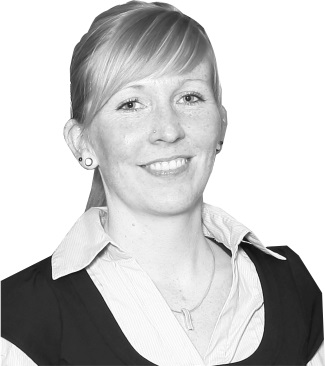Dipl.-Biol. Denise Franz
Faculty of Mathematics and Natural Sciences
Phone: +49 (0)381 498 6035
Email: denise.franz(at)uni-rostock.de
Topic
Analysis of the electrical signal-electrode-coupling
Description
Four thousand years before our time Hippocrates already recognized the central role of the brain and its responsibilities to many several illnesses. With the progression of technical development the anatomy and structure of the brain could be clarified to the greatest possible extend. The functional basis is the neuron, which is in complex circuitries with other neurons responsible for the functionality of the brain. A significant point of the electrophysiology is the clarification of the context between the network connectivity and the physiological function. Therefore we have many diverse techniques for the analyzing process. One of them are the so called multielectrode arrays (MEAs), which are mostly built of planar metal electrodes. This electrode layout allows the non-invasively and parallelly recording of extracellular field potentials of several neurons in the network. The advantages of this method are the analysis and stimulation of a major population of neurons in the network over a large period of time.
Meanwhile the MEAs have a broad field of applications. On the one hand there are used for in vitro investigations like pharmacological research studies or Long term potentiation experiments. On the other hand MEAs are practiced for in vivo applications, for example as brain pacemaker or cochlea implants. The general ambition of this project is the characterization and optimization of the signal coupling between the MEA electrode and the cell.
Approach
- Establishment of low density culture (with primary neurons or stem cells) for better correlation of cell signals
- Evaluating of several coating methods to improve the distance between the cell and the electrode
- Effect of coating will be proofed with optical comparison of the morphology of the cells under the microscope, with impedance spectroscopy and with three dimensionally microscopy
- For validation of extracellular signals the patch clamp technique will be combined with the multielectrode array technique
Results
- Optimal conditions for the cultivation of primary neurons on microelectrode arrays were found.
- With the manual and automated patch clamp, human induced pluripotent stem cell-derived dopaminergic neurons were electrophysiologically characterized. The results indicated cells with neuronal characteristics that give us the possibility of an alternative neuronal cell culture.
- A new setup combining the microelectrode array technique and the manual patch clamp had been successfully established. It allows correlated analysis of cell network (detected by the microelectrode arrays) and single cell (by manual patch clamp) data.
Publications
Reviewed paper important congresses
- TAUTORAT, C., SCHEFFLER, U., FRANZ, D., KRÖGER, T., KOESTER, P.J., BAUMANN, W., KLINK, O. and BEIKIRCH, H.. 2015. PoreGenic® - Patch-on-Chip System für die präklinische Forschung an Ionenkanälen – Teil II. In: 12. Dresdner Sensor‐Symposium. G. Gerlach und A. Schütze, Editor. Verlag der Wissenschaften GmbH, 2015, Dresden 7.‑9. Dezember 2015, AMA Service GmbH, Wunstorf, 2015. ISBN 978-3-9813484-9-1, pp. 118-123. DOI: 10.5162/12dss2015/P2.8.
- FRANZ, D., TAUTORAT, C., SCHEFFLER, U., KLINK, O., KRÖGER, T., GIMSA, J., W. BAUMANN, W., BEIKIRCH, H. and KOESTER, P.J., 2013. PoreGenic® - Patch-on-Chip System für die präklinische Forschung an Ionenkanälen. In: 11. Dresdner Sensor‐Symposium. G. Gerlach und A. Schütze, Editor. Verlag der Wissenschaften GmbH, 2013, Dresden 9. - 11. Dezember 2013, AMA Service GmbH, Wunstorf, 2013. ISBN 978-3-9813484-5-3, pp. 68-72. DOI: 10.5162/11dss2013/3.5
- FRANZ, D., TAUTORAT, C., SCHEFFLER, U., KLINK, O., KRÖGER, T., GIMSA, J., W. BAUMANN, W., BEIKIRCH, H. and KOESTER, P.J., 2012. PoreGenic® ‐ Patch‐on‐Chip System for Adherent Cellular Networks. Biophysical Society Meeting, 102 (3, 1) 1, pp. 583a. DOI: 10.1016/j.bpj.2011.11.3175.
- TAUTORAT, C., FRANZ, D., GIMSA, J., BAUMANN, W. and BEIKIRCH, H.. 2011. PoreGenic® - Patch-on-Chip System für Zellnetzwerke. In: 10. Dresdner Sensor‐Symposium. G. Gerlach und A. Schütze, Editor. Verlag der Wissenschaften GmbH, 2011, Dresden 5.‑7. Dezember 2011, AMA Service GmbH, Wunstorf, 2011. ISBN 978-3942710-53-4, pp. 41-46. DOI: 10.5162/10dss2011/2.2.
Posterbeiträge
- FRANZ, D., GIMSA, J., KLINK, O. and OLSEN, H..2016. Electrophysiological Characterization of Human Induced Pluripotent Stem Cell-derived Dopaminergic Neurons using Manual and Automated Patch Clamp. 9th International Symposium on Neuroprotection and Neurorepair (ISN&N). 19.-22. April 2016. Leipzig.
- FRANZ, D. and KLINK, O., 2015. Electrophysiological characterization of Dopa.4UTM human IPS cell-derived dopaminergic neurons. Axiogenesis Application Workshop. 15.‑17. April 2015. Köln
- FRANZ, D., TAUTORAT, C., SCHEFFLER, U., KLINK, O., KRÖGER, T., GIMSA, J., W. BAUMANN, W., BEIKIRCH, H. and KOESTER, P.J.. 2012. PoreGenic® ‐ Patch‐on‐Chip System for Adherent Cellular Networks. Biophysical Society Meeting, 102 (3, 1) 1, pp. 583a. DOI: 10.1016/j.bpj.2011.11.3175.
Vorträge
- Electrophysiological Characterization of Human Induced Pluripotent Stem Cell-derived Dopaminergic Neurons using Manual and Automated Patch Clamp. 2016. 9th International Symposium on Neuroprotection and Neurorepair (ISN&N). 19.-22. April 2016. Leipzig.
- Electrophysiological Characterization of human induced pluripotent stem cell-derived dopaminergic neurons on the QPatch. 2016. 60th Annual Meeting Biophysical Society. 27. February‑2 March 2016. Los Angeles.
- PoreGenic® - Patch-on-Chip System für die präklinische Forschung an Ionenkanälen. 2013. 11. Dresdner-Sensor-Symposium. 9.‑11. Dezember 2013. Dresden.
Forschungsaufenthalte
- Human iPS cell-derived dopaminergic neurons on automated Patch Clamp systems. Sophion – Biolin Scientific, 28. September – 11. Dezember 2015, Ballerup, Dänemark.
- High Density Multielectrode Arrays. ETH Zürich Department of Biosystems Science and Engineering, Bio Engineering Laboratory, Group Prof. Dr. Andreas Hierlemann. 03. August – 07. August 2015, Basel, Schweiz
Supervisors
In addition to the entire graduate school, my supervisors are:

